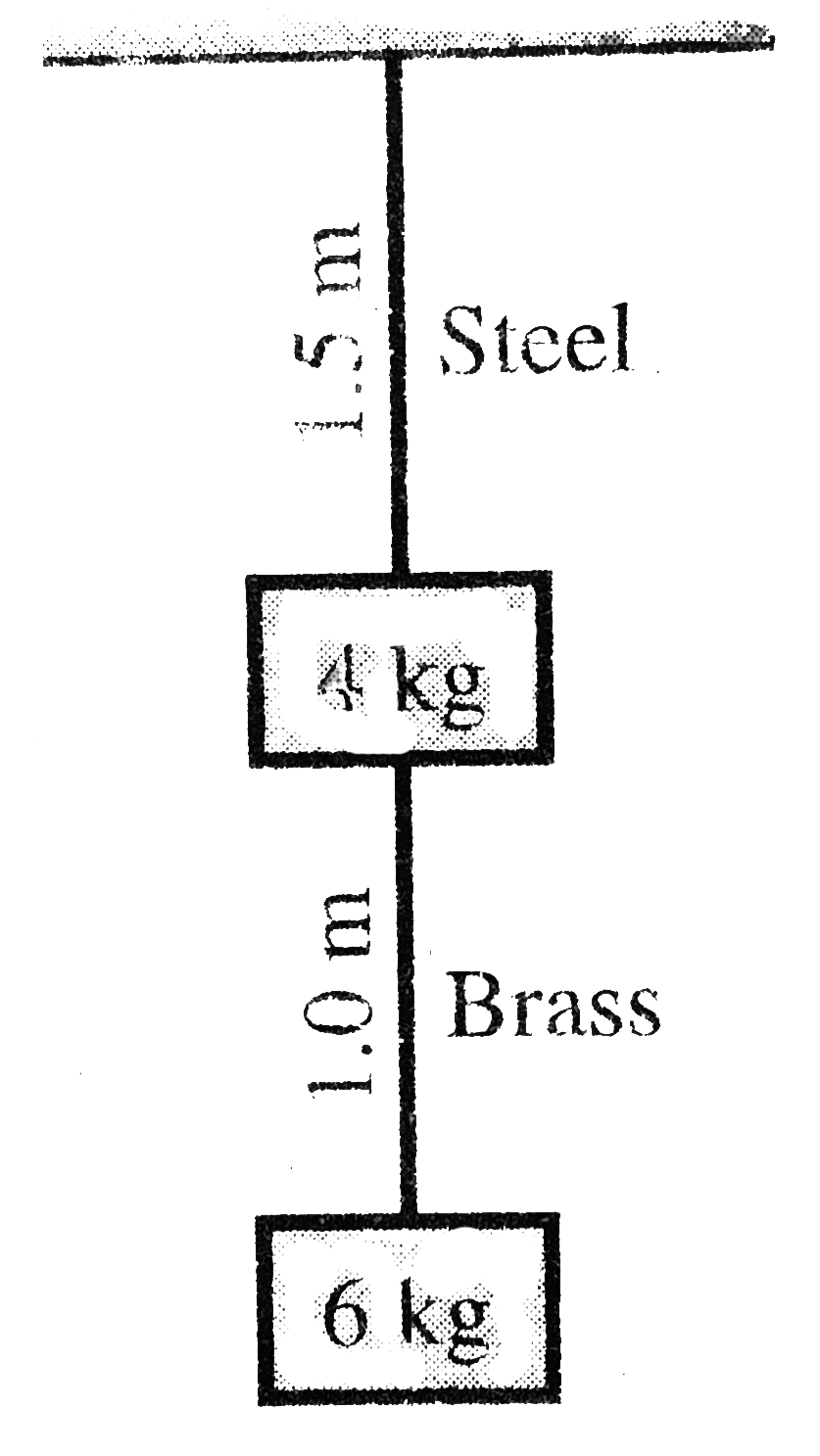In the question number 55, the ratio of elongation of steel to the copper wires is
52
25
32
23
The correct Answer is:B
From Eq.(i), of the above solution,we get ΔLSΔLC=LSLC×YCYS
Substitution the given values, we get
ΔLSΔLC=1.6m2.4m×1.2×1011Nm−22×1011Nm−2=25
Topper's Solved these Questions
- MECHANICAL PROPERTIES OF SOLIDSBOOK - NCERT FINGERTIPSCHAPTER - MECHANICAL PROPERTIES OF SOLIDSEXERCISE - Applications Of Elastic Behaviour Of Materials
8 Videos
- MECHANICAL PROPERTIES OF SOLIDSBOOK - NCERT FINGERTIPSCHAPTER - MECHANICAL PROPERTIES OF SOLIDSEXERCISE - Higher Order Thinking Skills
8 Videos
- MECHANICAL PROPERTIES OF SOLIDSBOOK - NCERT FINGERTIPSCHAPTER - MECHANICAL PROPERTIES OF SOLIDSEXERCISE - Stress-Strain Curve
5 Videos
- MECHANICAL PROPERTIES OF FLUIDSBOOK - NCERT FINGERTIPSCHAPTER - MECHANICAL PROPERTIES OF FLUIDSEXERCISE - Assertion And Reason
15 Videos
- MOTION IN A PLANE BOOK - NCERT FINGERTIPSCHAPTER - MOTION IN A PLANE EXERCISE - Assertion And Reason
15 Videos
Similar Questions
One end of a horizontal thick copper wire of length 2L and radius 2R is weded to an end of another horizontal thin copper wire of length L and radius R .When the arrangement is stretched by applying forces at two ends , the ratio of the elongation in the thin wire to that in the thick wire is
View SolutionIn figure the upper wire is made of steel and the lower of copper. The wires have equal cross section. Find the ratio of the longitudinals strains developed in the two wires.

View Solution
Knowledge Check
In the above question the ratio of the elongation produced in the copper wire and steel wire are
A7:2B5:2C2:5D5:7One end of a horizontal thick copper wire of length 2L and radius 2R is weded to an end of another horizontal thin copper wire of length L and radius R .When the arrangement is stretched by applying forces at two ends , the ratio of the elongation in the thin wire to that in the thick wire is
A0.25B0.50C2.00D4.00Two wire of same radius and lengh the are subjected to the same load. One wire is of steel and the other is of copper. If the Young's modulus of steel is twice that of copper, the ratio the energy stored per unit volume in steel to that of copper wire is
A1:2B2:1C1:4D4:1
In figure the upper wire is made of steel and the lower of copper. The wires have equal cross section. Find the ratio of the longitudinal strains developed in the two wires.

View SolutionTwo wires of diameter 0.25cm, one made of steel and other made of brass, are loaded as shown in the figure. The unloaded length of the steel wire is 1.5m and that of brass is 1.0m. Young's modulus of steel is 2.0×1011Pa and that of brass is 1.0×1011 Pa. Compute the ratio of elongations of steel and brass wires. △lsteel△lbrass=?

View SolutionOne end of a horizontal thick copper wire of length 2L and radius 2R is welded to an end fo another horizontal thin copper wire of lenth L and radius R. When the arrangement is stretched by applying forces at two ends, the ratio of the elongation in the thin wire to that in the thick wire is
View SolutionOne end of a horizontal thick copper wire of length 2L and radius 2R is welded to an end fo another horizontal thin copper wire of lenth L and radius R. When the arrangement is stretched by applying forces at two ends, the ratio of the elongation in the thin wire to that in the thick wire is
View SolutionA steel wire fo length 5m and cross-sectional area 2×10−6m2 streches by the same amount as a copper wire of length 4m and cross sectional area of 3×10−6m2 under a given load. The ratio of young's mouduls of steel to that of copper is
View Solution
